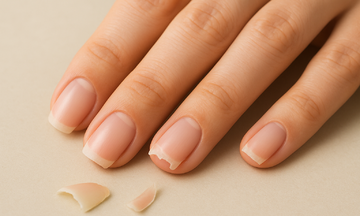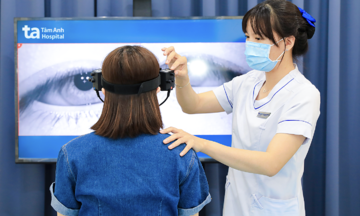Correct posture reduces stress on joints and lowers the risk of injury during daily activities. Performing appropriate exercises and making simple changes in how you sit and stand throughout the day can correct your posture and prevent musculoskeletal diseases.
Stand tall
Proper posture means your body weight is evenly distributed along your spine when standing upright. Stand with your feet hip-width apart, weight balanced between both feet, and avoid locking your knees.
Strengthen your core muscles by pulling your navel towards your spine. Squeeze your shoulder blades together and downwards, avoiding hunching your shoulders. Tuck your chin in slightly, keeping your head aligned with your shoulders.
Increase standing time
If possible, try using a standing desk while working. Adjust the desk height to elbow level, keeping your arms alongside your body while standing.
Alternate between standing and sitting every 20-60 minutes. Initially, keep standing periods short, then gradually increase the duration. Wear supportive shoes and consider standing on an anti-fatigue mat to reduce pressure on your feet.
 |
It is advisable to sit with correct posture and stand up every 20-60 minutes while working to stretch muscles and reduce pressure on the spine. Image generated by AI. |
Sit correctly
Incorrect sitting posture for extended periods can cause back or neck pain and even affect digestion and breathing. While individual workstation setups may vary, there are general principles for improving sitting posture:
Position your computer monitor within 30 degrees of your eye level. Keep your wrists straight. Adjust the height of your chair (if possible) or use wrist rests while using the keyboard and mouse.
Bend your elbows at about 90 degrees and keep them close to your sides. Keep your shoulders back. Place a lumbar support pillow behind your lower back. Position your hips, knees, and ankles at 90-degree angles. Use a footrest if needed.
Avoid drastic posture changes
Forcing your body into new postures can lead to musculoskeletal pain. Poor posture usually develops over time, so it also takes time to correct. Practice the new posture for 10-15 minutes at a time and gradually increase the duration as your body adapts.
Some devices can help you improve your posture. These devices have adjustable straps that gently pull your shoulders back, training your muscles to hold you in a better position. You can combine them with stretching and strengthening exercises until you can maintain the correct posture without support.
Choose appropriate footwear
Shoes affect posture. For example, high heels shift weight onto the balls of your feet, causing your upper body to lean backward for balance. This posture makes it difficult to maintain a straight spine. When buying shoes, choose those that provide full arch support, have a wide enough toe box that doesn't constrict the front of your foot, and have cushioned soles.
To ensure a good fit, buy shoes at the end of the day when your feet are typically slightly swollen. Consider using shoe inserts for better arch support. Consult a podiatrist for specific advice.
Avoid crossing your legs
Crossing your legs while sitting rotates the pelvis and alters the pressure on the spine. This posture causes muscle strain in the lower back, leading to pain in the hips, back, neck, and shoulders; it can also compress nerves and blood vessels in the legs, causing numbness.
Move more
To correct poor posture, stand up and move more during the day. If your job requires prolonged sitting, try to engage in at least 5 minutes of moderate to vigorous physical activity (such as brisk walking or climbing stairs) for every 40-50 minutes of sitting.
Avoid slouching
Many comfortable seats, like sofas or armchairs, are not good for posture. Avoid slouching or hunching over while sitting. Don't lean to one side (for example, don't lean on the armrest of a chair).
Place a rolled-up towel or pillow behind your lower back for support. Keep your feet flat on the floor or on a footstool.
Sleep in a comfortable position
Proper sleeping posture ensures that your spine is supported in a neutral position. This can be challenging, especially if you toss and turn frequently while sleeping. Depending on your sleeping position, there are various products like pillows and mattresses to support your spine.
Sleeping on your back: Flat pillows often don't provide enough neck support for back or side sleepers. Use a pillow with a contoured design to support the back of your neck.
Sleeping on your stomach: Sleeping on your stomach puts a lot of pressure on your back. To keep your spine aligned, consider placing a small pillow under your stomach/pelvis and using a flat pillow (or no pillow) under your head.
Sleeping on your side: Place a firm pillow between your knees to distribute pressure evenly on your hips and lower back.
Stretch regularly
Poor posture can lead to muscle strain and discomfort. Stretching improves flexibility, making it easier to sit or stand with proper posture.
Try breathing exercises
Slouching puts pressure on the lungs, making it difficult for them to expand fully when breathing. Deep breathing exercises can improve posture and reduce the risk of aches and pains commonly experienced by people with sedentary lifestyles. Diaphragmatic breathing helps you breathe more deeply and also has a relaxing and stress-reducing effect.
If you experience pain while adjusting your posture or have been diagnosed with a condition affecting your joints, muscles, or spine, consult a physical therapist for specific advice.
Anh Ngoc (According to Verywell Health)
| Readers can submit questions about musculoskeletal diseases here for doctors to answer. |












